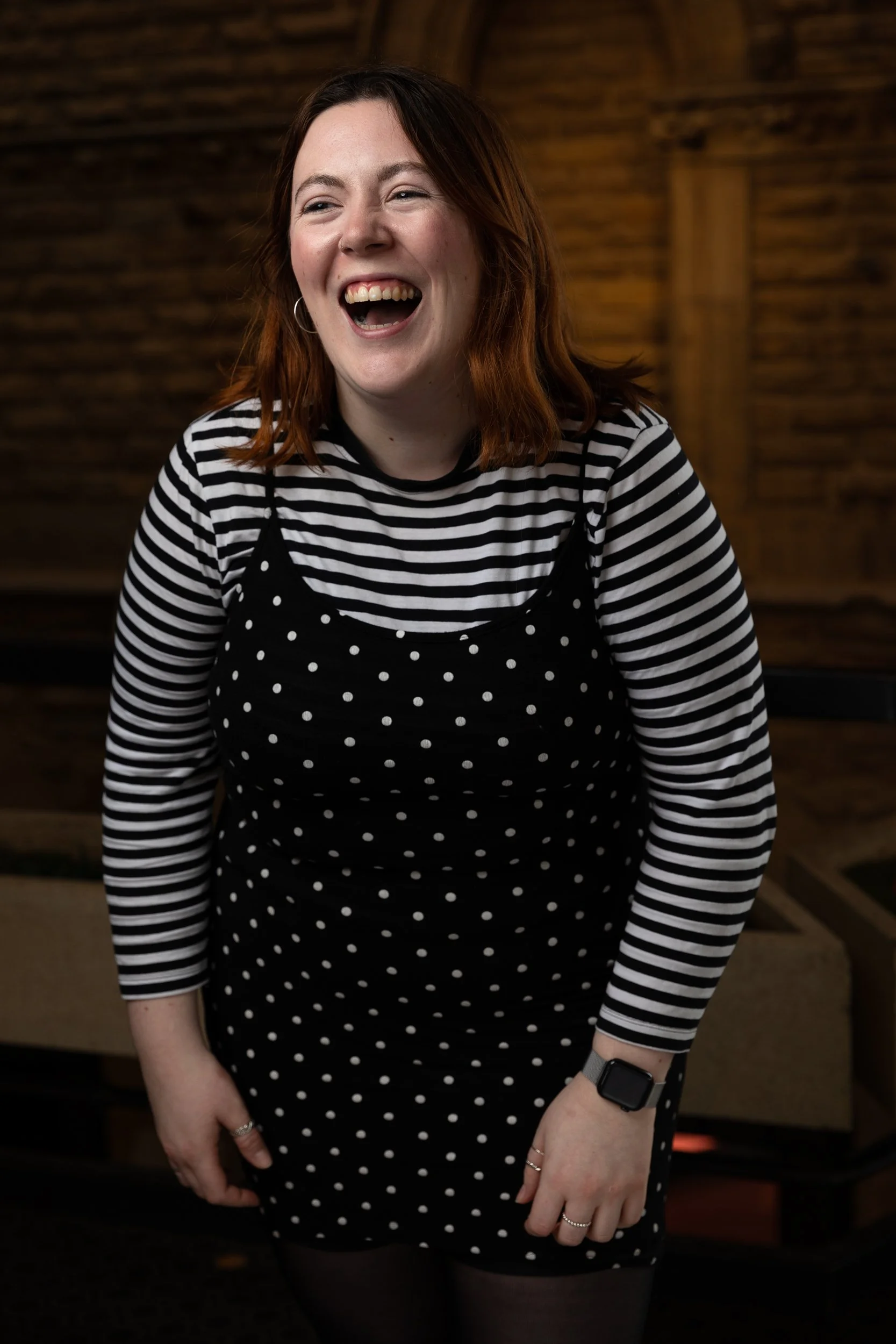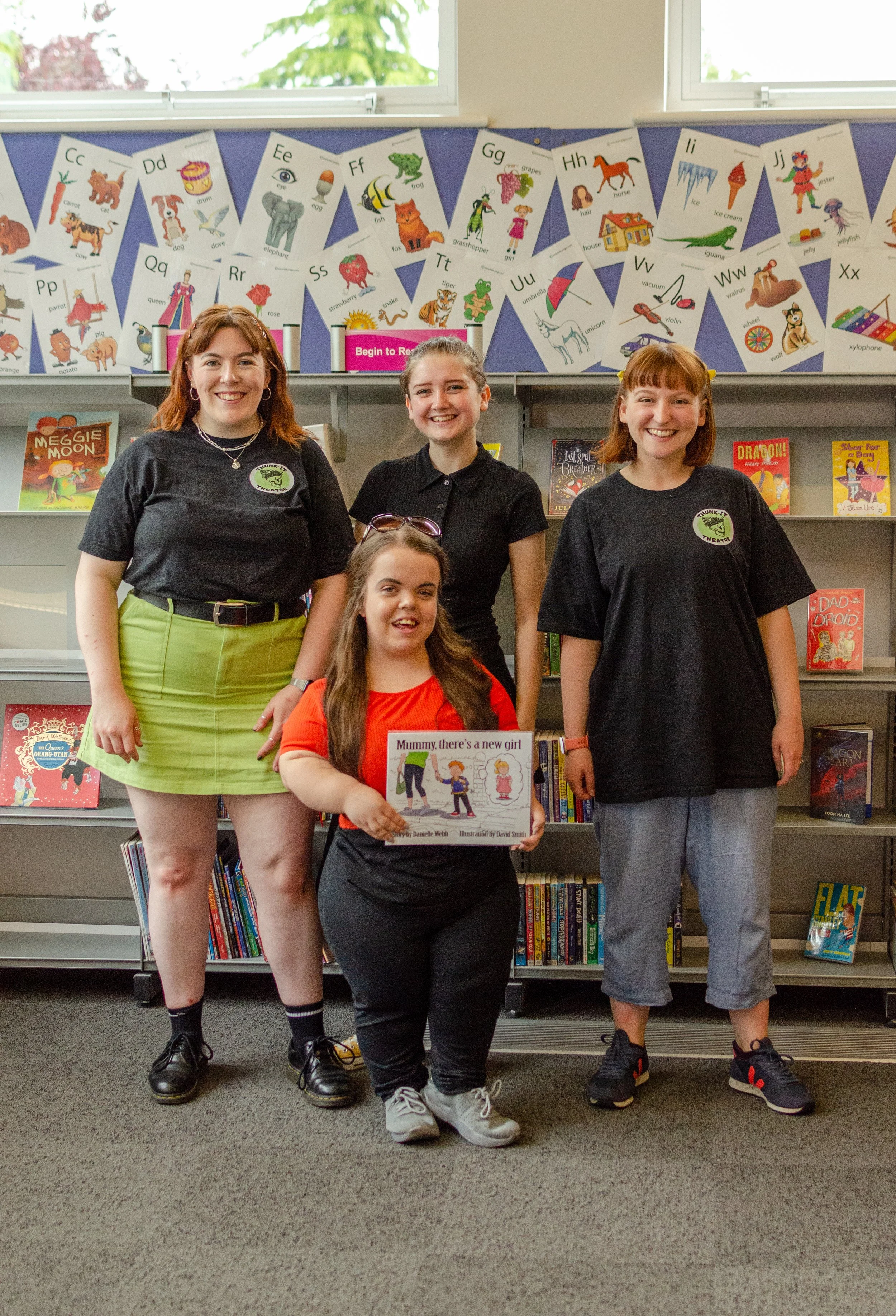Director Becky Lennon on making accessible theatre
Ever wondered how to integrate more access into your theatre directing? Becky Lennon is doing just that!
Becky (she/her) is a York born and based Creative Practitioner. Within this title she’s a director as well as a community facilitator, producer and co-founder and artistic director of Thunk-It Theatre.
She’s currently undertaking the Developing Your Creative Practice (DYCP) scheme from Arts Council England in directing accessible theatre for young people.
Since graduating from The Royal Central School of Speech and Drama in 2020, Becky has collectively worked with over 1,000 participants across a variety of projects, including SEND young people with FEAST Projects, and adults with learning disabilities at Wolds Wonders.
Thunk-It Theatre’s stage adaptation of Mummy, There’s a New Girl by Danielle Webb for 4 to 8 year olds, told the story of a new girl at school with Dwarfism and included integrated sign.
We sat down with Becky to chat about what learning about accessible theatre through her DYCP has been like so far…
A photo of Becky Lennon. Becky is a white woman in her mid twenties with shoulder length golden brown hair. She’s wearing a long sleeved black and white top with a black strappy dress over the top with white polka dots. She’s standing in room with brick walls and stone blocks behind her. She’s leaning forward slightly, with her arms by her side and laughing brightly.
What made you decide to apply for a DYCP in accessible theatre and what has it involved so far?
I really wanted to spend some time looking at my practice as a director and how I can make theatre that serves the communities I work with in my ‘applied theatre’ hat. I really wanted to blend together performance and community engagement work.
A director brings all the elements of a production together so having access at the forefront of a process is really important. So far DYP has involved looking at other practitioners, directors and theatre companies who are doing things that I am interested in, such as bringing in sign, integrated sign, creative captioning and audio description.
I researched companies such as Graeae who look at post and pre show accessibility, as a ‘production’ isn’t just the show itself. Access can often be plonked on at the end of the process so my DYCP is really widening my knowledge of how access can be as involved in the process as possible.
It’s also allowed me to travel and meet different theatre makers. For example, I'm booked in to do some work in Guildford, Scotland and other places across the country. This way I can really widen my knowledge of what people are already doing which can influence my work both as a freelance director and at Thunk-It Theatre.
What’s a project you’re particularly proud of?
At Thunk-It Theatre we’ve been working on our production of New Girl for a few years now. It’s a children's piece that promotes diversity through its story (with it being about a girl with Dwarfism starting a new school). We made it and created it in as accessible a way as we could with the budget we had.
In our last R&D of the show we brought in Access consultants, introduced more signing, trained our actors in signing, and enabled our audiences to feel more safe and supported and with a breakout space and a relaxed performance environment.
We’ve recently received some Arts Council funding to develop the piece even further, and so we're going to integrate more creative access from the moment someone is engaging with the show all the way through to long after the project ends.
I’m so excited about this development and what we’ll be able to do with the show next (no spoilers!). This development will be happening towards the end of this year. Watch this space!
Inside a children’s library. Becky Lennon with actor Amy Helena, children’s author Danielle Webb, and a Thunk-It Theatre facilitator. Becky, Amy and the facilitator are standing behind Danielle, who is holding her book ‘Mummy, there’s a new girl’. Danielle has dwarfism and is wearing a red top and black jeans. Becky and the facilitator are wearing Thunk-It Theatre t-shirts while Amy is wearing a black polo top.
Why do you think it’s important for directors (and other theatre makers) to be developing their practice to enable accessibility?
Theatres need to do more to ensure that everybody feels welcome and safe in their buildings. The arts are for everybody, no matter their backgrounds or any kind of protected characteristics. It should be an experience that is welcoming for all.
It’s important for theatre makers to be showing what they’re doing and not telling. I’ve noticed a bit of a movement in the theatre industry right now where there's a lot of telling people “We’ve done this and that” but not actually showing what’s been done through tangible practice.
There's no point making theatre for one demographic of people when it should provide a place that everybody can go and celebrate and enjoy themselves.
What are you most looking forward to while you’re developing your theatre making practice?
Developing more creative ways of including people, and also surprising audiences who might not have ever seen a creatively captioned or integrated signed performance before.
I'm also really looking forward to being able to rethink the way that we would usually run a process and start thinking about access as a whole and not just and not just one element of it.
What advice would you give other directors and theatremakers wanting to develop their use of access tools?
Be honest and transparent about what you can and can't do. We know that in the arts the budgets are not always massive, so just be super aware that you can do things for access that don't cost lots of money, but it might take time.
For example, with families with SEND young people, I’ve had to be really honest in the past and open about what was on offer and not promising something I couldn’t achieve.
It’s also very important to be working with people that you know and trust and respect the work of. Have conversations with the people who have lived experience of access barriers and engage with the communities you’re making the theatre for.
Most importantly, start thinking about access at the beginning of your project. It isn't something you add on at the end because you ‘should’.
Can we see some of your work? What’s happening next for you?
Yes! Another Thunk-It Theatre show Hansel and Gretel is touring right now…
Join Hansel and Gretel for a woodland adventure in this fun, accessible performance! This SEND inclusive and signed performance sees siblings Hansel and Gretel telling their story. Abandoned in the woods, the two children must use their guile and courage to escape the clutches of the evil witch, before she gobbles them up for dinner.
Moving through the beautiful wilderness, the audience are immersed into Hansel and Gretel's world. With singing, dancing, and things to feel, smell, hear and see - Thunk-It’s ‘Hansel and Gretel’ is a feast for the senses, and gets the audience included in the magic and fun of this classic fairytale story with a twist!


